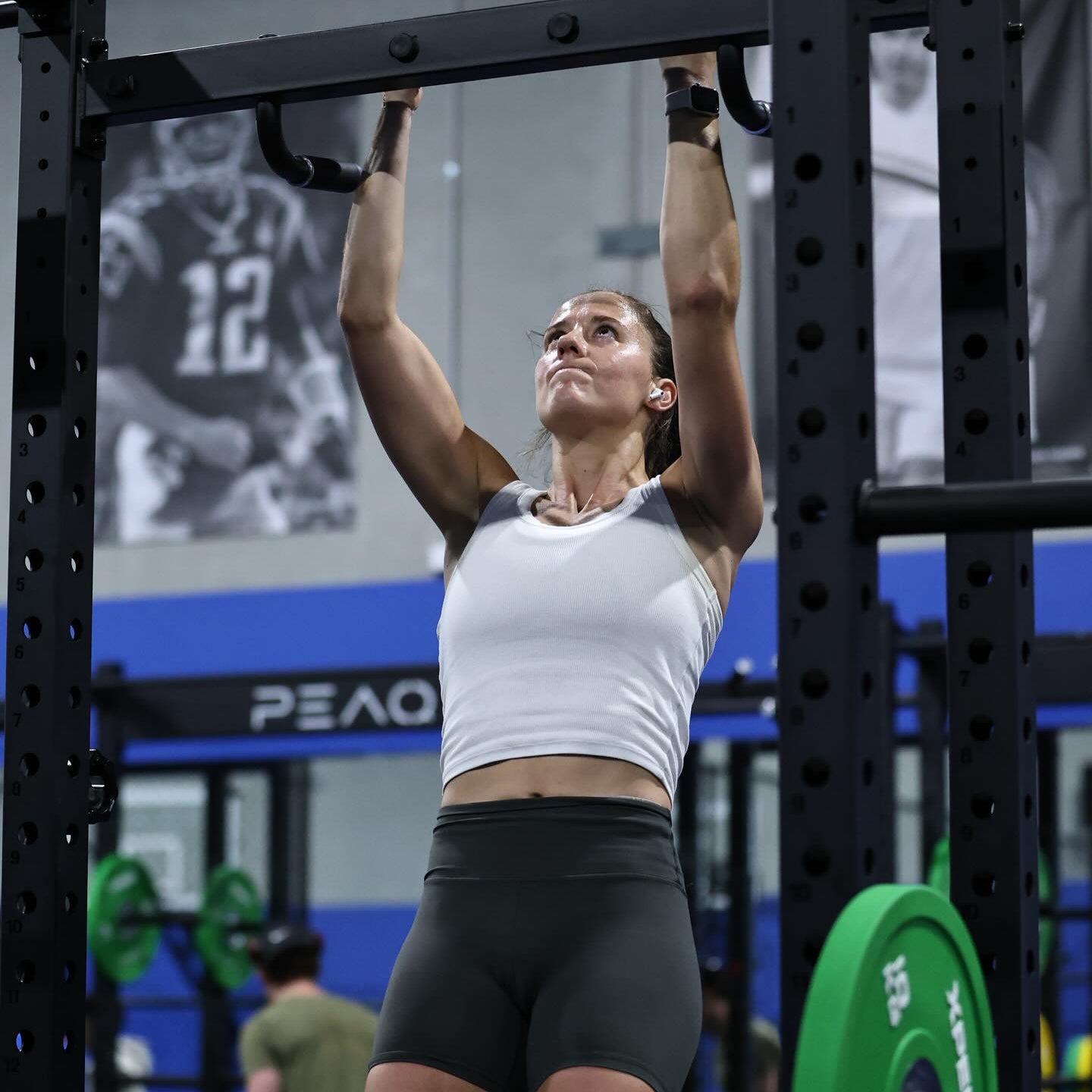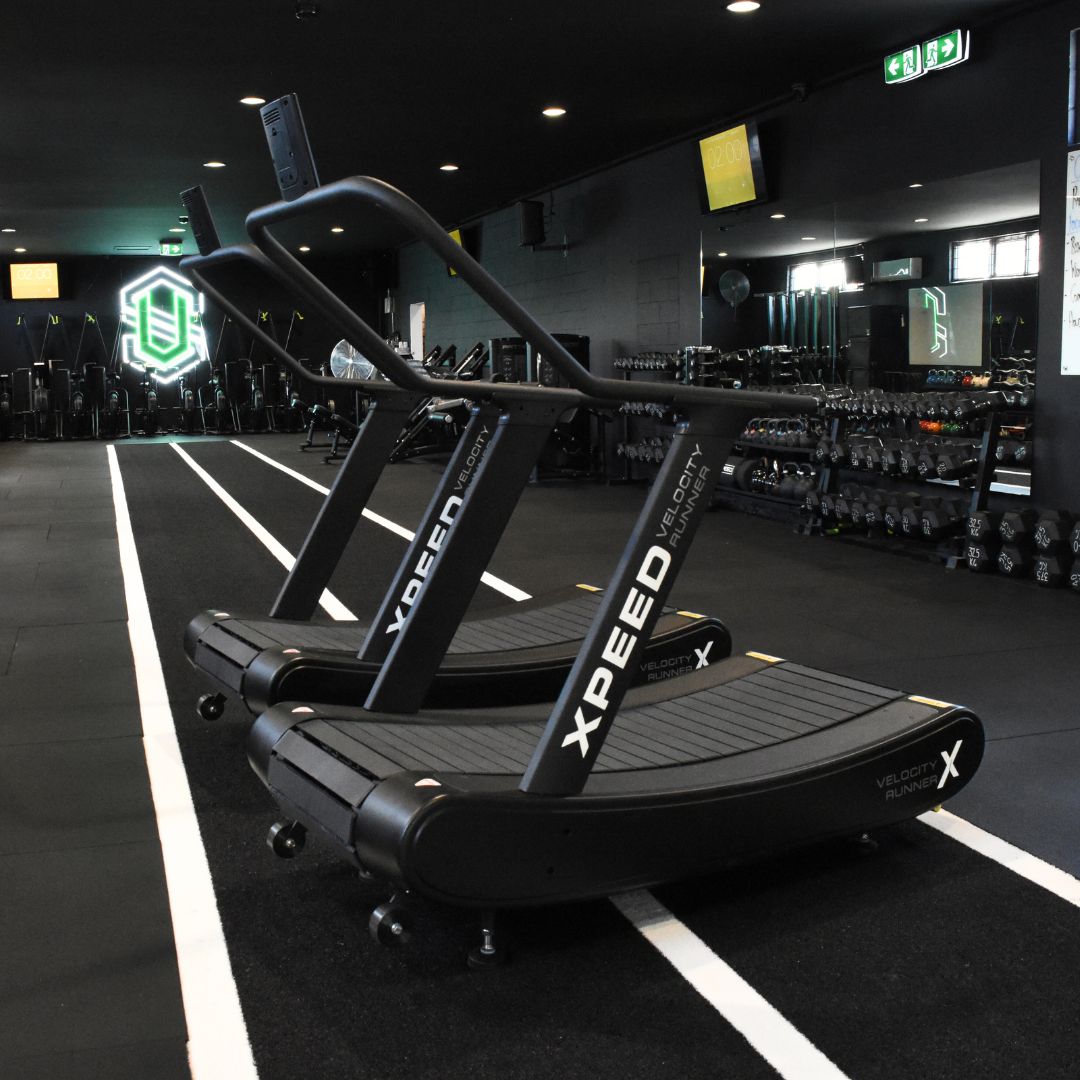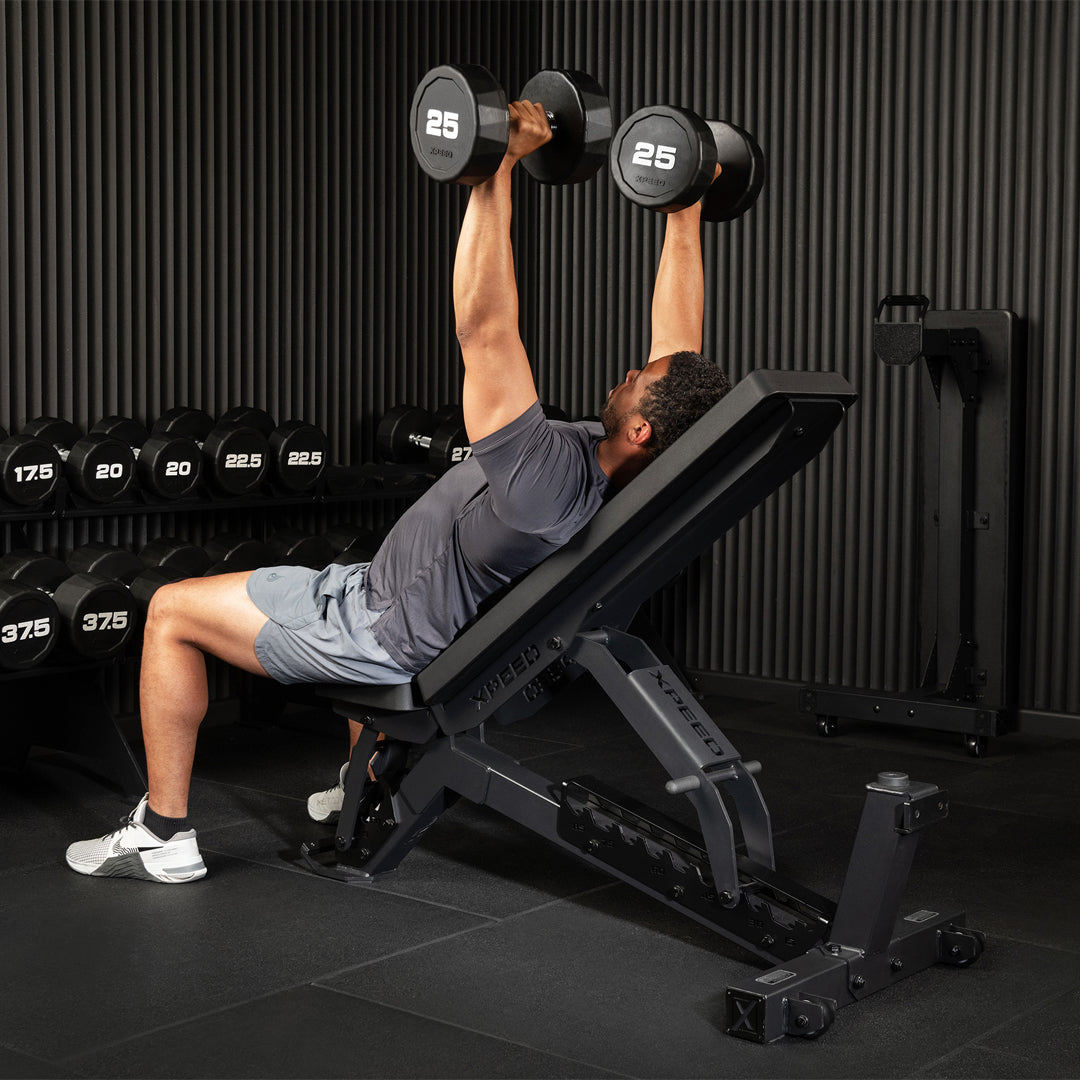Overview
- Strength training supports menopausal health: Resistance-based workouts help counteract muscle loss, improve bone density and manage symptoms like fatigue, mood swings and weight gain.
- Tailored workouts are essential: Circuit and set-based routines offer flexibility and effectiveness for different fitness levels, with exercises that support stability, strength and confidence.
- Exercise promotes physical and emotional resilience: A consistent strength routine, paired with sleep, nutrition and self-compassion, helps women feel empowered during menopause and beyond.
Menopause and Muscle: Tailoring Strength Training for Women
As sure as the sun comes up and the sun goes down, we all know that strength training is important as we age. But does it make a difference for women who are experiencing the significant milestone of menopause? Well, a question we recently received in our Xpeed Survey via Kylie from New South Wales, got us diving into some strength training reading.
“What is the best type of strength work for menopausal women”?
While menopause is a natural part of the ageing process, typically occurring in the late 40s or early 50s, its impact on physical and mental health can be profound. Throughout my years as a PT I’ve been fortunate to train lots of women, and still do train women in this age bracket, and it’s a really powerful stage of life. I've found that it's a phase where many clients reassess their priorities and focus on self-care.
During menopause, hormonal shifts, particularly a decline in oestrogen levels, can lead to various changes in the body. One of the primary concerns for many women during this time is the potential loss of muscle mass and decline in bone density. These changes not only affect physical health, increasing the risk of conditions like osteoporosis, but can also have significant implications for mental well-being.

Understanding Menopause and its Effects on Strength:
In the face of these challenges, there emerges a powerful ally for women: strength training. In this blog, we delve into the transformative power of strength training for menopausal women, exploring how it not only helps maintain physical vitality but also contributes to mental resilience, empowering women to embrace this transition with strength and confidence.
We're lucky to have some great minds within the Xpeed Community, so we reached out to one of our friends Kara Moore, a Senior Exercise Physiologist from iNform Health & Fitness in Kensington, Adelaide to ask a couple of questions.

Contributor - Kara Moore - Senior EP at iNform Health & Fitness. Kara has a passion for helping clients achieve things inside and outside of the gym that they thought were never possible. She enjoys educating her clients on the importance of exercise and getting them to develop strong foundational movement patterns. Her professional interests include Women’s Health, Osteopenia/Osteoporosis and Breast Cancer.
How Do Hormonal Changes Impact Muscle Mass and Bone Density?
As we now know, oestrogen plays an important role in maintaining bone density. The reduced oestrogen production during menopause can lead to decreased bone density, and thus increase the risk of osteoporosis. The good news, exercise can strengthen bones and muscles, and improve balance reducing the risk of fractures due to falls.
Additionally, studies have shown the decline in oestrogen can impact the distribution of body fat and muscle composition, making women more prone to an increase in body fat and a decrease in lean muscle mass.
What Is The Importance of Maintaining Strength for Overall Health:
There's a few ways to answer to this question so lets break it down like this;
- Prevent Weight Gain: Due to changes in hormone levels (decreased testosterone and oestrogen, which promote muscle building and healing) during menopause women may find they gain weight more easily than before (especially around the belly). Exercise, particularly strength training and healthy eating is a great way to reduce weight and prevent any extra kilo’s creeping on. Research published in the Journal of Strength and Conditioning Research demonstrated that regular resistance training positively influences resting metabolic rate, contributing to improved weight management in postmenopausal women.
- Help Manage Symptoms: Exercise can also help manage and reduce some of the symptoms of menopause such as; aches and pains, loss of libido, and fatigue. Interestingly, A 2012 study published in the medical journal Menopause by the North American Menopause Society (NAMS) found that women experienced fewer hot flash symptoms within 24 hours after participating in a 30-minute session of moderate-intensity exercise.
At the end of the day, increasing physical activity will result in a positive cycle of feeling better, which will increase motivation to exercise, making you feel better, and so on. You’ll end up feeling better on the inside and out! - Reduce Risk Of Diabetes: Changes in hormone levels during menopause can also affect the way your body reacts to insulin, potentially leading to diabetes. Exercise helps the body respond to insulin and remove excess blood sugars reducing the risk of developing diabetes. In addition to this, oestrogen plays a protective mechanism against cardiovascular disease. During menopause, oestrogen is reduced which increases the risk of cardiovascular disease. Incorporating exercise into your daily routine can strengthen your heart and reduce risk of heart disease
- Boost Your Mood: Women going through menopause commonly struggle with mood changes, anxiety, depression, and stress due to the hormonal changes within their bodies. However, exercise can increase positive mood and also protect against anxiety and depression.
A meta-analysis published in the Journal of Sports Science & Medicine concluded that resistance training has significant positive effects on depressive symptoms and overall mood in adults. By incorporating strength training into their routine, menopausal women can harness the mental health benefits, experiencing not only physical strength but also emotional resilience during this transformative phase of life.
A big thanks to Kara for helping us get to the bottom of some often asked questions around Menopause.

Importance of Consulting with a Healthcare Professional:
Before starting out on a new fitness program, especially during menopause, it is paramount to consult with a healthcare professional. Menopausal women may have unique health considerations, and a professional can provide personalised advice based on individual health status, existing conditions, or medications. This step ensures that the chosen strength training program aligns with individual needs, promoting both safety and efficacy.
Potential Strength Training Routine for Menopausal Women:
It’s important to remember that Rome wasn’t built in a day, so before starting any exercise program, it's crucial to establish a foundation and gradually progress. Below is a sample strength training routine tailored for menopausal women. Adjust the intensity and frequency based on individual fitness levels and preferences. If you're more of a visual person, there's a great video here on how to design a workout program.
Warm-Up:
Perform each of these exercises one after the other.
- 5 - 10 minutes of pre-roll foam rolling. Be intentional about foam rolling.
- Active hamstring stretch
- Hip extensions
- Side lying 90-90 stretch
- Plank - 40 seconds
- Band walking - 10 steps each side
- Bent leg band walking - 10 steps each side
- Y’s & T’s
Strength Training Routines:
Option 1: Circuit
When it comes to programming a strength workout, one easy way to think about structure, is using a combination of lower and upper body exercises in a circuit style manner. This is a time friendly style, typically the whole workout including the warm up can be done in under 25 minutes.
The Workout:
A1 - Goblet Squat x 10 reps
A2 - DB Press On Bench x 10 reps
A3 - Reverse Alternating Lunges x 10 reps (each side)
A4 - Resistance Tube Rows x 10 reps
A5 - Plank x 40 seconds
A6 - 1 minute of cardio - Rower / Skipping / Spin Bike
1 Minute of rest - Repeat 3 more times
What you’ll need: 1 x KB, 2 x DB, 1 x Bench, 1 x Resistance Tube, 1 x Skipping Rope or Cardio machine.
Option 2: Sets & Reps
Another way to think about programming a strength workout at the beginning of your journey, is the sets and reps method. In this style, you perform the same exercise for the designated sets and reps before proceeding to the next exercise. For instance, complete 1 set of 10 repetitions, rest for 45 seconds to a minute, and then repeat this pattern for the subsequent 3 sets before advancing to the next exercise. Something to note, I personally enjoy this style of workout when my life admin is high. I find working through the sets in this manner is methodical and calming for the mind.
The workout:
A1 - Goblet Squat 4 x 10
A2 - DB Press 4 x 10
A3 - Static Lunges 4 x 10
A4 - DB Bent Over Row 4 x 10
A5 -Pallof Press 3 x 10
A6 -Plank 3 x 30 secs
Conditioning
B1 - 2 minutes Cardio - Skipping / Rowing Machine / Ski Erg / Spin Bike
What you'll need: 1 x KB, 2 x DB, 1 x Bench, 1 x Power Band, 1 x Skipping Rope or Cardio machine.
Cool-Down: Post roll foam rolling and static stretching (10 minutes): Perform foam rolling on key areas used during the workout, such as calves, hamstrings, quads, glutes, thoracic spine and lats. Complete some static stretches for major muscle groups, holding each stretch for 15-30 seconds to improve flexibility and reduce muscle tension. This period is important for the nervous system to calm down after training, so take the time to cool down and recover in this period.
Optional - Deep Breathing (5 minutes): Engage in deep, rhythmic breathing to promote relaxation and recovery.
Tips on Gradual Progression:
Start with Light Resistance: Begin with lighter weights or resistance and gradually increase as strength improves. The simplest way to do this is to keep a record in a training diary, or in the notes section of your phone.
Listen to Your Body: Pay attention to any signs of discomfort or fatigue, and adjust the intensity or duration accordingly.
Progressive Overload: Gradually increase the difficulty of exercises to continually challenge the muscles for ongoing strength gains.
Remember, individual responses to exercise can vary, and modifications should be made based on individual needs and feedback from healthcare professionals.
Overcoming Challenges and Staying Consistent:
Menopausal women may encounter various challenges that can potentially hinder their commitment to strength training. Some common issues include:
Joint Pain: Hormonal changes during menopause can contribute to joint pain and stiffness.
Fatigue: Fluctuating hormones, poor sleep, and daily life stressors can contribute to fatigue. Aim for quality sleep by maintaining a consistent sleep schedule and creating a conducive sleep environment.
Time Constraints: Busy schedules may make it challenging to find time for regular exercise. Treat workouts as appointments, scheduling them into the calendar to prioritise exercise time.
Staying Motivated:
Set Realistic Goals: I’m big on this and it is often overlooked. It’s important to set sustainable and achievable goals. Be sure to track your progress.
Variety: Keep workouts diverse and engaging to prevent monotony.
Accountability: Partner with a friend, join a class, or hire a trainer for added motivation and accountability.

Conclusion:
As menopausal women navigate the intricate landscape of physical and hormonal changes, strength training can be your north star. The benefits extend beyond the physical realm, delving into mental health and overall wellness. It is a journey that requires dedication, adaptation as well as self-compassion.
In embracing the transformative power of strength training during menopause, it is crucial to adopt a holistic approach to health. Beyond the weight lifted or the resistance faced, menopausal women are encouraged to integrate positive lifestyle choices into their routines. This includes nourishing the body with wholesome foods, prioritising restorative sleep, and cultivating a mindset that appreciates the body's strength and resilience.
Strength training becomes not just a routine but a celebration of the incredible capabilities of the female body during this unique phase of life. It's not just a workout; it's a commitment to a healthier and more resilient version of oneself. So Kylie, thanks again for answering the Xpeed Survey and I hope we've helped answer your question, we certainly enjoyed putting it all together.
Don't forget to fill out the Xpeed Survey to go in the draw for a $50 Xpeed Gift Card.

Written by Xpeed Brand Manager, Simon Mitchell. Simon has a Bachelor of Human Movement, is a certified FMS trainer and has worked in the fitness industry since 2003. Simon started his fitness journey as a trainer with iNform Health and Fitness before moving into commercial radio and then back into fitness with Bodyism in the United Kingdom and Australia. A career highlight was being one of Daisy Ridley's personal trainers on Star Wars IX - The Rise Of Skywalker.














